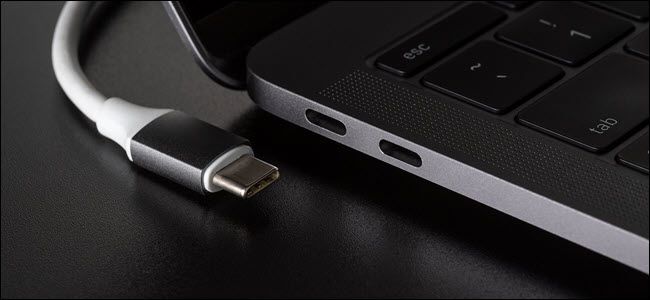Quick Links
Have you just learned the difference between USB Gen 1, Gen 2, and Gen 2×2? Well, get ready to throw all of that out because the USB Implementors Forums (USB-IF) just announced USB 4 and it will trump them all.
USB moves fast, both in a "transferring your data" sense and in a "the standards have changed again" sense. The USB-IF just recently announced new naming schemes for USB 3.2, the latest USB spec that promises data transfer speeds up to 20 Gbps. But as fast as USB 3.2 is, Thunderbolt 3, a three-year-old USB standard, boasts twice the speed at 40 Gbps. USB 4 will change that by offering the same speeds.
Thunderbolt was Proprietary and Expensive
If you're wondering why Thunderbolt 3 doesn't already dominate the USB field, the answer is cost. Intel created Thunderbolt 3, and anyone who wants to use it (whether it be a flash drive, the port in your laptop, or a cable) has to pay a royalty feed to gain certification. That fee means the price of anything related to Thunderbolt goes up, and other USB specs remain cheaper by comparison. That's why you'll find Thunderbolt in your premium MacBook but not in a $300 laptop. The cost is prohibitive, and that's just one reason why not all USB-C is the same.
But Intel wants a wider adoption of Thunderbolt, and in pursuit of that announced it would open up the spec. USB 4 came out of that drive. According to the USB Promotor Group, USB 4 will offer the same speed as Thunderbolt through the use of two 20 Gbps channels. High speeds like this will make running external displays and external graphics cards more feasible and, without those royalty fees, less expensive. And as usual, USB 4 will be backward compatibility with USB 3.2, USB 2.0. However, because of the of Intel's technology, USB 4 will also be backwards compatible with Thunderbolt 3.
Another benefit should be the cost of USB 4 devices. Since creating USB 4 won't require a paying a royalty fee to Intel, the overall cost of USB 4 products should be lower than Thunderbolt 3 devices.
Keep in mind though, obtaining these speeds means a refresh of all hardware. It's not enough to have a USB flash drive capable of 40 Gbps, the port you plug it into also to needs to match that capability. If you plug a USB 4 drive into a USB 3.2 2x2 drive, you'll be limited to the port's top speed (and visa-versa).
This Is Just a Draft Spec With Basic Information
Unfortunately, what we don't know is...anything else. For instance, Intel says it will continue offering Thunderbolt 3 alongside USB 4, so it stands to reason it will provide benefits that USB 4 does not, what those benefits are have been left unsaid.
We also don't know when we'll see the first USB 4 products. Finalized specifications for the USB 4 standard won't come until the middle of the year, at the soonest, and only from there should manufacturers start creating USB 4 products.
And the other thing we don't know? The final naming. If you're hoping it will be called USB 4, don't hold your breath. Naming often comes later, as seen with USB 3.2 2x2, which the USB-IF initially referred to as USB 3.2. But when all those details are sorted out, and the dust settles, it may be possible that the long promise of 'one port to rule them all' with USB-C may finally come true.

